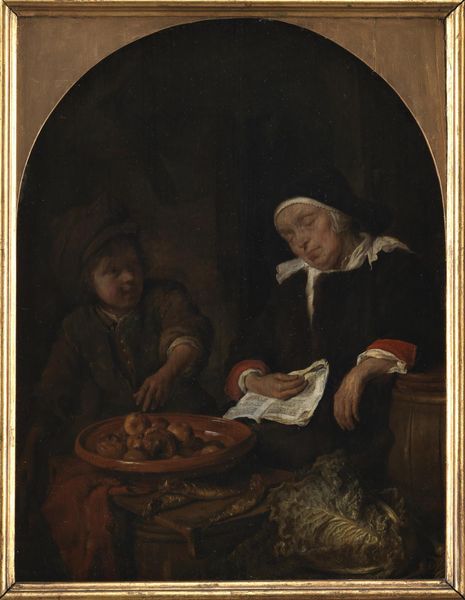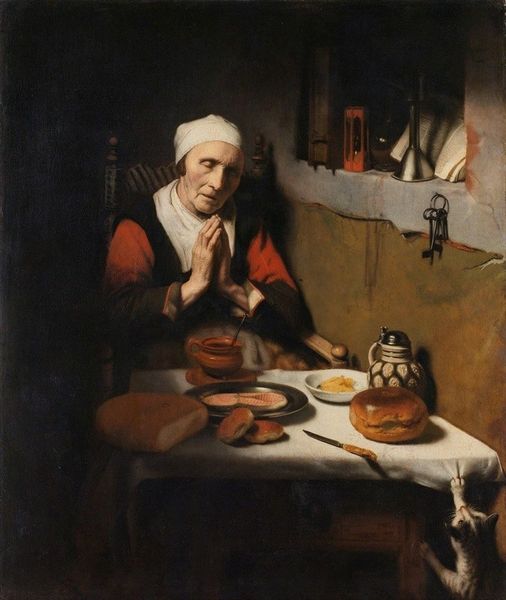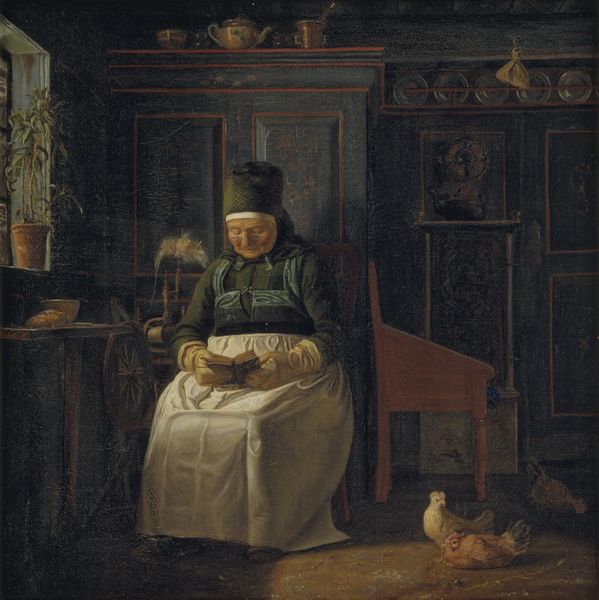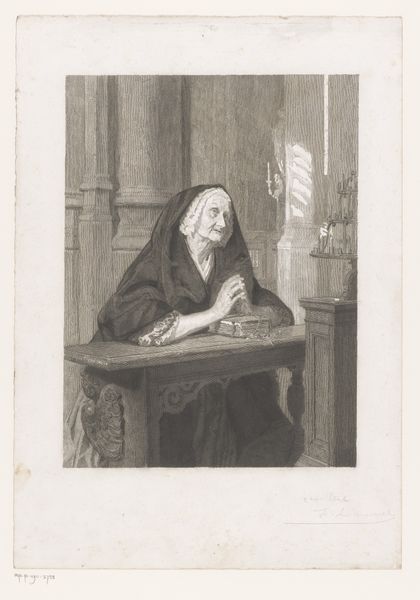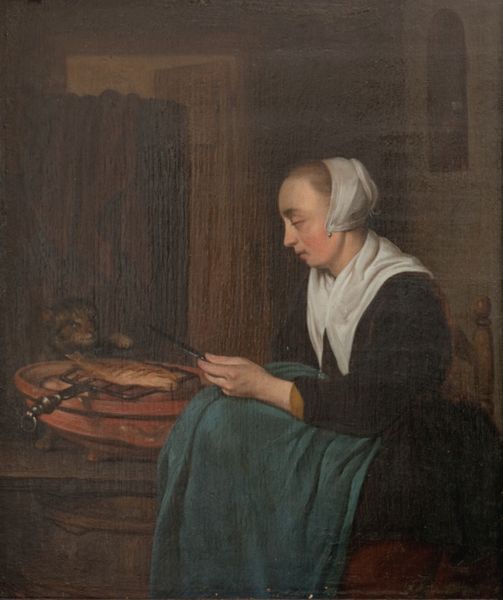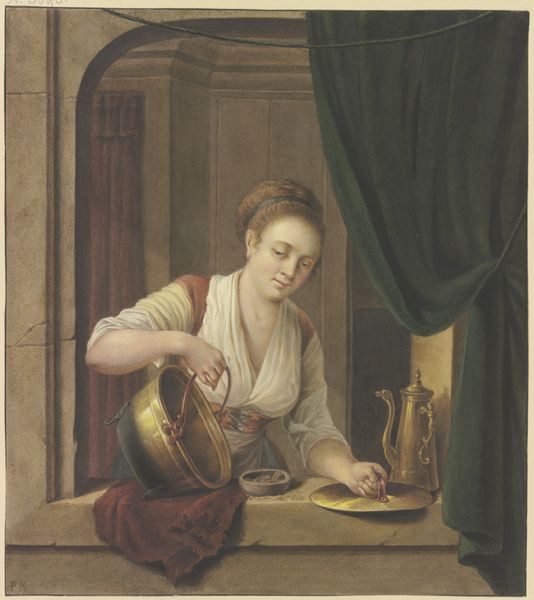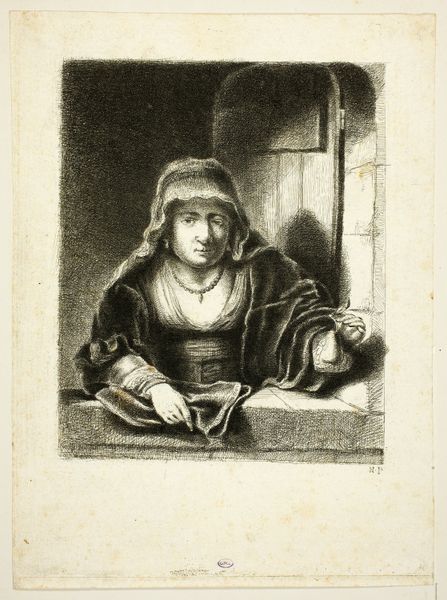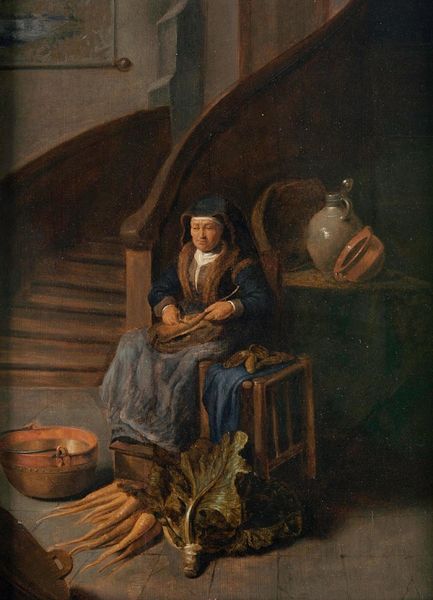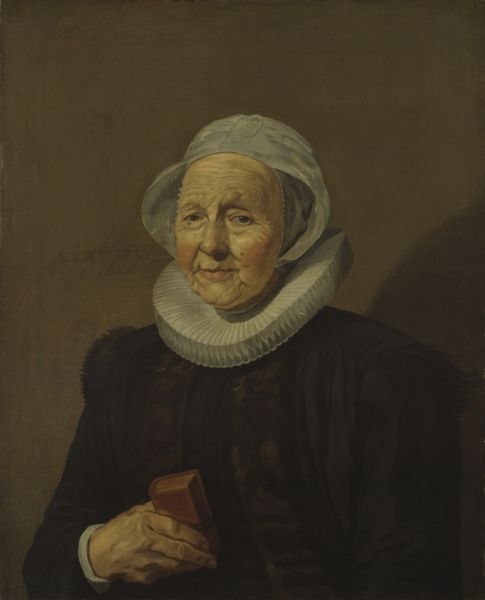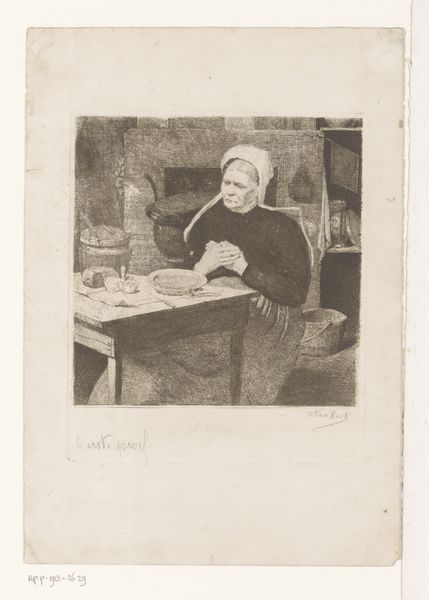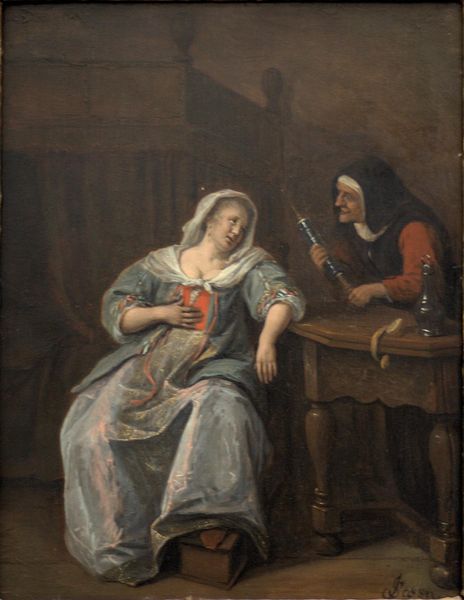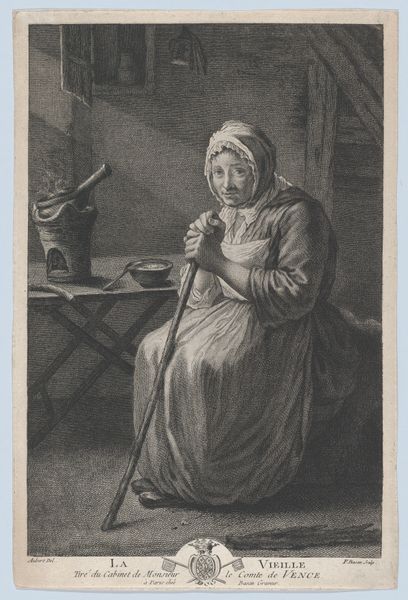
painting, oil-paint, wood
#
portrait
#
dutch-golden-age
#
painting
#
oil-paint
#
oil painting
#
earthy tone
#
wood
#
genre-painting
#
portrait art
#
realism
Dimensions: 31.5 cm (height) x 28 cm (width) (Netto)
Editor: Here we have Quiringh van Brekelenkam’s “Old Woman at her Meal,” dating from around 1660, an oil painting on wood. There's a stillness and simplicity to it; it feels like an intimate glimpse into someone's everyday life. What do you see in this piece beyond the surface realism? Curator: I see a quiet rebellion against the dominant narratives of the Dutch Golden Age. It’s not a grand portrait of a wealthy merchant, but an honest depiction of a working-class woman. How does the artist's choice to focus on her meal challenge the viewers? Editor: That’s a great point. The food on the table doesn't look luxurious. Is it commentary on social inequality? Curator: Absolutely. The plainness of her meal highlights the economic realities for many women in 17th-century Netherlands. This isn't just a genre painting; it's a social document, subtly critiquing the era's obsession with wealth and status, bringing to light a very real truth of Dutch society. What impact do you think such depictions would have on contemporary audiences? Editor: Perhaps prompting empathy or even questioning the established social order. It makes you consider the unseen stories behind the prosperity of the Golden Age. Curator: Precisely. Art has the power to unveil those unseen stories, challenge assumptions, and foster critical dialogue about the world around us, even centuries later. Editor: I’m leaving with a fresh perspective on Dutch Golden Age art. I learned to appreciate the untold stories art brings to light. Curator: And I’m reminded how vital it is to constantly re-examine history through the lenses of gender, class, and social justice.
Comments
No comments
Be the first to comment and join the conversation on the ultimate creative platform.

